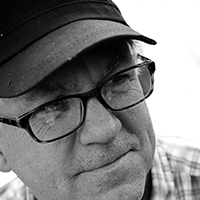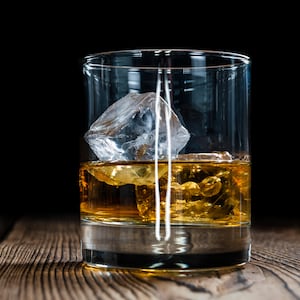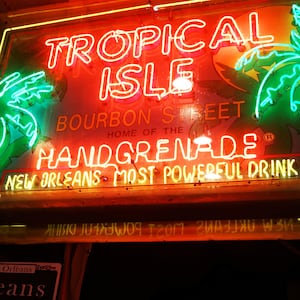James Donaldson was living on the island of Islay in Scotland, running the visitor center at a small distillery, when his partner came into the room holding up the latest issue of the island’s fortnightly newspaper. Did you see this, she asked? She pointed to an ad seeking a so-called professional forager.
He laughed. “It was the nexus of everything I’d ever been interested in,” Donaldson said, “distilling and outdoors work and a fascination with plants.”
He applied. He got the job.
ADVERTISEMENT
Donaldson began work in May, 2017, and was thrown immediately into scouring island marshes and woodlands in search of lady’s bedstraw, mugwort, creeping thistle, tansy and the rest of the 22 island botanicals that make their way into the Botanist Islay Dry Gin.
Of all liquor, gin may be the most inextricably linked to a place. While the base spirit is often neutral—a largely tasteless, high-proof liquor that can be produced anywhere from nearly anything—the gin-making process is designed to extract the flavors of various botanicals that make it distinct. Increasingly, craft distillers are scouring their neighborhoods, striving to capture the terroir of place through local barks, roots, leaves and weeds, all toward the aim of putting a place in a bottle.
Donaldson grew up near Scotland’s northeast coast at the edge of the Highlands and had what he often describes as a “feral” childhood. His grandmother made “country wine” with what she could find, grow and ferment locally; he spent his days roaming the fields and forest, building dams in streams and investigating plants. “I was kicked out in the morning and told not to come back until dark,” he said. “It makes me sound like I’m 100 years old.” (He’s actually 47.)
He went on to study botany at university in Edinburgh (“I wasn’t the most diligent student”) and after graduation worked as a guide for tours around Scotland. That brought him often to Islay, where he became acquainted with the owners of a small distillery, who eventually asked him to move there and run a visitor center.
Less than two years later the fateful ad appeared and he pivoted to become a professional forager.
The Botanist Gin launched in 2010—the first gin made on Islay—produced by the Bruichladdich whisky distillery, which was bought by Rémy Cointreau in 2012. The gin was formulated following a year of experimentation by noted botanists Richard and Mavis Gulliver, who comprised the first foraging team. The gin they concocted used nine core botanicals that are traditional in gin but don’t grow on the island—imports such as such orange peel, licorice and cassia. But then came the secret sauce: the 22 island botanicals, such as sweet cicely, white clover and apple mint. “A lot of them are non-native,” Donaldson said. “But in the botanical sense that means they were brought by the Romans 2,000 years ago.”

The result is a sippable gin that’s bracing with a briny bite, where common citrus and piney notes of everyday gin are complicated by the rooty, earthy and bold.
Donaldson’s job essentially involves wandering hill and dale and gathering small plants. While it sounds quite idyllic, he at first found it quite stressful. The Gullivers were planning to move off the island at the end of the season; Donaldson had but one summer to learn gin foraging—when and where to find key ingredients, and how to work with landowners across whose land he trod. “I didn’t want to be coming into April the following year and calling up [Richard and Mavis] to remind me again where that was?”
And so he learned that well-foraged gin doesn’t just capture place, it also captures time.
Donaldson said the identification part wasn’t all that daunting—with the exception of one or two botanicals, he was familiar with all of the plants. “But knowing when exactly you should pick things, for the aromas you were after—it was quite difficult,” he said.
Botanicals have seasons, a window when they’re ripe and redolent and full of the compounds that give the best flavor to gin. And that window can open and close swiftly. Depending on the harshness of the winter or the dryness of the spring, the optimal harvesting period can vary from year to year. The forager constantly monitors what’s coming into season, and what’s on the cusp of decline.
“A lot is done by scent,” Donaldson said. “You can look at your calendar from the year before, and you can go out to the same place on the same day the next year. But it doesn’t mean it’s fit to pick.”
Each species tends to have its own “tell,” he said. With downy birch, for instance, the leaves need to be fully unfurled, but not yet “hardened up.” It’s ready to pick when you squeeze the leaf and it sticks to both thumb and forefinger. “If you can just lift your fingers off it,” he said, “you’ve missed it.” It’s a skill that becomes second nature over time. “It’s like recognizing your friends. You know what they look like, but if you try and describe them to someone else, you’re like, well, ‘he’s just this guy.’”
During the foraging season, which runs roughly from March to October, Donaldson spends his days traversing the island in an electric car, gathering what needs to be picked before returning to the distillery to prepare his harvest—drying some plants, and preparing tinctures with others, all with the aim of ensuring that flavors stay at their best.

The United Kingdom has progressive land rights, allowing anyone to cross private land as well as forage—although not for commercial purposes. Donaldson has agreements for commercial foraging with a half-dozen Islay landowners, and these are renewed each year. The fee paid to landowners for foraging rights? One British pound and six cases of gin.
Donaldson said he strives to spread out his foraging across parcels to avoid depleting or stressing on any one area, and to guarantee botanicals for the future batches. The distillery is also involved with programs to conserve the island resources—and is especially attentive to island juniper, which has faced historic pressure from overgrazing by sheep, slow growth and popularity as fuel among early bootleggers (it didn’t emit much smoke). In 2020, the distillery helped underwrite research by a PhD student who was studying the genetic diversity of island juniper. Sprigs of juniper branches are collected as part of this process, and some of these ultimately go into the still as what he called a “symbolic” ingredient—but the bulk of the juniper flavor comes from imported berries.
When the foraging season slows in fall, Donaldson shifts his duties to analyzing research, working with landowners on agreements for the following season, and assisting on conservation projects with the Botanist Foundation (a community interest company, the British version of an American nonprofit). It’s also a good time to be indoors—there’s nothing between Atlantic Canada and the Islay’s shores to buffer howling westerlies, and with winter comes scant daylight, scudding clouds and damp winds that often rise into gales. And this past winter was made all the more isolating owing to the pandemic, which kept islanders in their home and curtailed social events.
But beyond every winter lies a spring—it’s the driest time of year on the island, and by June the island is awash with 18 hours of daylight. The winter of 2020/21 was uncommonly cold, Donaldson reported, which pushed the foraging season back beyond normal. He’s now fervently watching the thermometer, looking out the window and taking walks in the grasslands to observe what’s coming to life.
“I’m desperate to get out,” he said. “Desperate. I mean, it’s been a long winter. I’m anxious to get back out there.”








